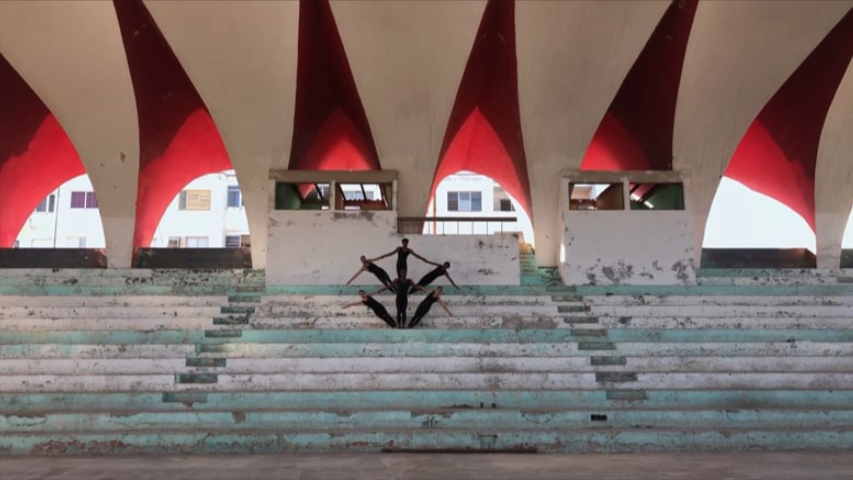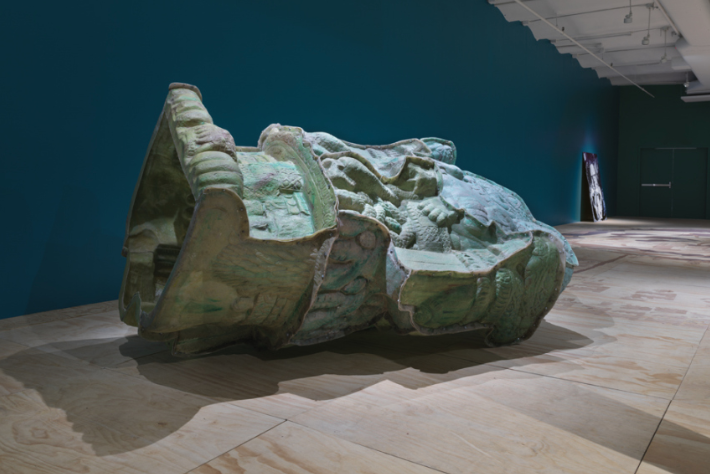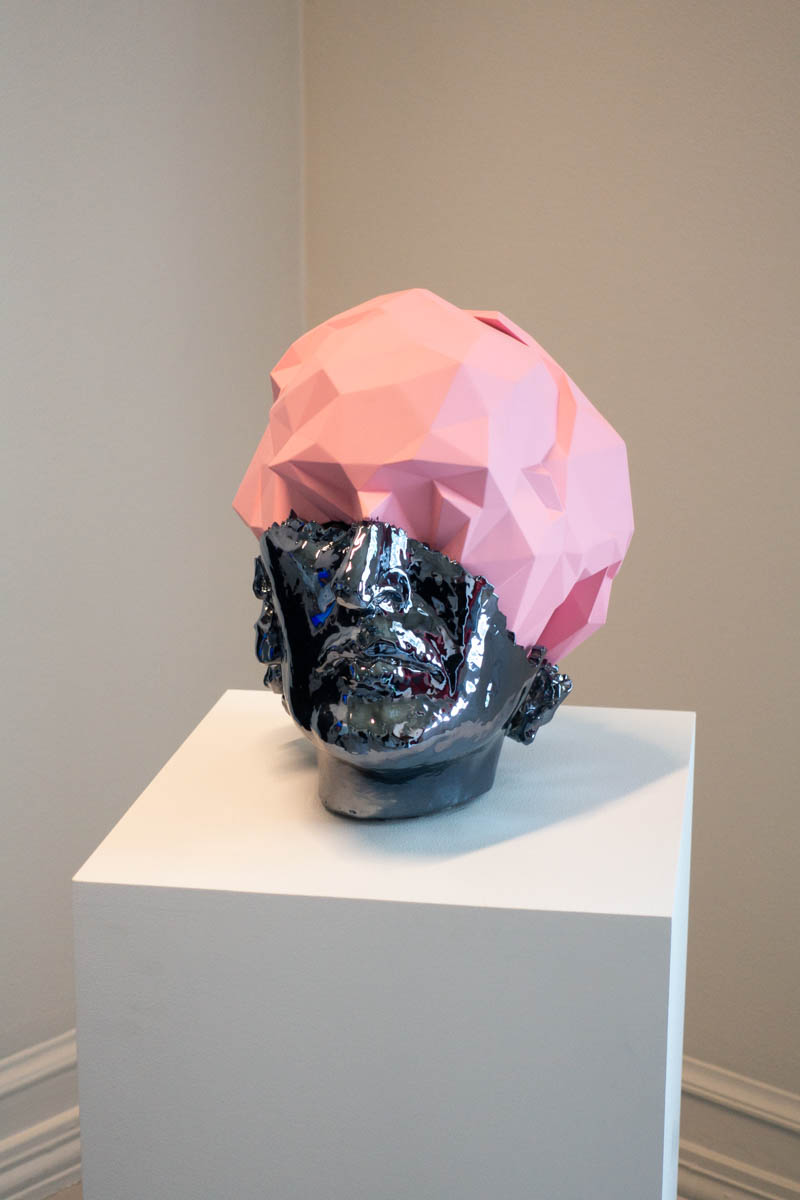Identity, popular culture and power are constant themes of contemporary Mexican art. Here is a selection by curator Luisa Fernanda Lindo of ten contemporary Mexican artists born after 1975.
1. ARTEMIO NARRO (1976)
Creative, irreverent, controversial and brutally honest, he is one of the most representative artists of the generation that emerged in 1990s Mexico. He was a founding member of La Panadería, founder of the Honorable Human Claim Committee (HCRH) collective, and is a member of the SOMA board. Through the appropriation and reinterpretation of popular culture, his artistic work questions the structures of power, globalization and violence.
Creativo, irreverente, controvertido y brutalmente honesto, es uno de los artistas más representativos de la generación que surgió en los noventa en México. Fue miembro fundador de La Panadería, fundador del colectivo Honorable Comité de Reivindicación Humana (HCRH), y es miembro del consejo de SOMA. A través de la apropiación y reinterpretación de la cultura popular, su obra artística cuestiona las estructuras del poder, la globalización y la violencia.

Imagen: La hoguera de las vanidades, 2019. Crédito: Angélica Ibarra. Cortesía: Artemio + MACHETE (galería).
2. TANIA CANDIANI (1974)
The intersection between language systems – from symbolic to technological – is a constant in her work. Therefore, from a translation and personal interpretation, Candiani seeks to reconstruct technologies of the past to propose a rereading from the present. She uses collaborations of science, technology and architecture to create a poetic fabric that explores the possibilities of language and its various meanings.
La intersección entre sistemas de lenguajes —desde el simbólico hasta el tecnológico– es una constante en su obra. Por ello, a partir de una traducción e interpretación personal, busca reconstruir tecnologías del pasado para proponer una relectura desde el presente. Valiéndose de colaboraciones de la ciencia, la tecnología y la arquitectura, crea un tejido poético que explora las posibilidades del lenguaje y sus variables de sentido.
 Still de Monumentos, 2019. Imagen tomada de taniacandiani.com
Still de Monumentos, 2019. Imagen tomada de taniacandiani.com
3. JORGE MÉNDEZ BLAKE (1974)
Méndez Blake’s work analyzes the connections between literature, art and architecture, to carry out sculptures, drawings and interventions that focus on the investigation of the concept of ‘library’. Thus, the inclusion of books in his sculptures generates a change both in its architectural structure and in the perception of the viewer. He is Co-founder of Ladera Oeste, an independent non-profit art space in Guadalajara.
Su obra analiza las conexiones entre literatura, arte y arquitectura, para llevar a cabo esculturas, dibujos e intervenciones que se centran en la investigación del concepto de ‘biblioteca’. Así, la inclusión de libros en sus esculturas genera un cambio tanto en su estructura arquitectónica como en la percepción del espectador. Es Co-fundador de Ladera Oeste, un espacio de arte independiente sin fines de lucro en Guadalajara.
 Imagen: Amerika, 2019, tomada del artista.
Imagen: Amerika, 2019, tomada del artista.
4. MARIANA CASTILLO DEBALL (1975)
Through installations, performances, sculptures and editorial projects, he explores the role of certain objects over time and how they generate a dialogue with current reality to understand Mexican history and identity. Thus, his work is configured as a long process of research and exchange between art, philosophy, literature and anthropology that become a journey not towards the past but towards tomorrow.
A través de instalaciones, performances, esculturas y proyectos editoriales, explora el rol de ciertos objetos a través del tiempo y cómo estos generan un diálogo con la realidad actual para entender la historia e identidad mexicana. Así, su obra se configura como un largo proceso de investigación e intercambio entre arte, filosofía, literatura y antropología que devienen un viaje no hacia el pasado sino hacia el mañana.

Imagen: No solid form can contain you, 2010. Imagen tomada del New Museum. Photo Maris Hutchison / EPW Studio.
5. MINERVA CUEVAS (1975)
Humor and irony is a pair that is present in the work of Cuevas, who puts on the table the policies and power relations that permeate social and economic ties which determine the consumer market and its consumers. Thus, it appropriates the language established by marketing and intervenes images and objects of daily consumption to question the condition of the individual in wild capitalism.
Humor e ironía es una dupla que está presente en la obra de Cuevas, quien pone sobre la mesa las políticas y relaciones de poder que permean los vínculos sociales y económicos que determinan al mercado de consumo y a sus consumidores. Así, se apropia del lenguaje establecido por el marketing e interviene imágenes y objetos de consumo cotidiano para poner en cuestión la condición del individuo en el capitalismo salvaje.
 Imagen: To Rebel, 2015, tomada de Kurimanzutto.
Imagen: To Rebel, 2015, tomada de Kurimanzutto.
7. OMAR VEGA MACOTELA (1988)
Observation is what governs his work. Through this, the artist is positioned as a hunter, observing the transformations, transmutations and transfigurations that occur in a system. Thus, revealing the patterns of behavior and learning who is a part of the system. Thus, his work questions both the possibility and the impossibility of the encounter between two worlds. Do not lose sight of it.
La observación es lo que rige su obra. Y es que, por medio de esta, el artista se posiciona como un cazador para observar las transformaciones, transmutaciones y transfiguraciones que se producen en un sistema, develando los patrones de comportamiento y aprendizaje de quienes forman parte de este. Así, su obra cuestiona tanto la posibilidad como la imposibilidad del encuentro entre dos mundos. No hay que perderlo de vista.
 Imagen: On transfiguration (2015), tomada de Rijksakademie van Beeldende Kunsten.
Imagen: On transfiguration (2015), tomada de Rijksakademie van Beeldende Kunsten.
8. MARCELA ARMAS (1976)
Marcela Arma’s work is made up of installation, video and performance, and addresses art as a meeting point that allows interconnecting techniques, disciplines, work processes and research to track the relationships that intertwine the social group with matter, energy, space, time and the construction of history, all in relation to spending and waste as structural pieces of contemporary society.
Su obra está conformada por instalación, video y performance, y aborda el arte como un punto de encuentro que permite vincular técnicas, disciplinas, procesos de trabajo e investigación para rastrear las relaciones que teje el conjunto social con la materia, la energía, el espacio, el tiempo y la construcción de la historia, en relación al gasto y al desperdicio como piezas estructurales de la sociedad contemporánea.
 Imagen: Still de video de Vórtice / Vortex (2013), tomada de Armas.
Imagen: Still de video de Vórtice / Vortex (2013), tomada de Armas.
9. MARIA SOSA (1985)
From the ecology of knowledge, Sosa conceives her work from the collaborative. Thus, her work proposes questions about the past and the events that organize contemporary social dynamics, focusing on the lags of colonization and conquest of America that survive today. These include racism, machismo and the desire to make invisible the non-western cultural manifestations.
A partir de la ecología de los saberes, Sosa concibe su obra desde lo colaborativo. Así, su trabajo propone interrogantes en torno al pasado y los sucesos que organizan las dinámicas sociales contemporáneas, haciendo foco en los rezagos de la colonización y conquista de América que sobreviven en la actualidad, como el racismo, el machismo y el afán de invisibilizar las manifestaciones culturales no occidentales.

Imagen: Mar, 2019, tomada de Parque Galería.
10. JULIETA ARANDA (1975)
Time is a constant in Aranda’s work. Through installations, videos and printed work, Aranda explores the idea of circulation in an effort to understand how information moves, how images move and, perhaps, how artists move, emphasizing the transfer process from one point to the other. She is co-director of e-flux, one of the most recognized and influential art platforms globally.
El tiempo es una constante en su obra. A través de instalaciones, videos y obra impresa, Aranda explora la idea de la circulación en su afán de comprender cómo se mueve la información, cómo se mueven las imágenes y, acaso, cómo se mueven los artistas, haciendo énfasis en el proceso de traslado de un punto al otro. Es codirectora de e-flux, una de las plataformas de arte más reconocidas e influyente a nivel global.
 Imagen: A fanciful strategy? I might have known better…, 2014, tomada de mor charpentier.
Imagen: A fanciful strategy? I might have known better…, 2014, tomada de mor charpentier.
*Text and selection by Luisa Fernanda Lindo, artist and curator
*Translation by Sierra Villarreal
*Edited by Paul Alonso
















































































































